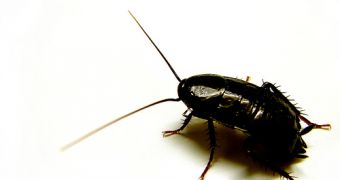A newly developed software allows scientists to carry out a detailed analysis of cockroaches' movements, opening the way to future exploring or rescuing robots that would be able to walk on any kind of ground and even look through debris.
Until now, many researchers tried to analyze exactly the way that cockroaches use their six legs to walk, run and turn, but the job proved to be quite difficult.
A team of researchers at Case Western Reserve University found a way of getting 3D movements of a cockroach's 26 leg joints, by using two high-speed cameras and a custom computer software.
The new technology developed by John Bender, a postdoctoral research associate in the department of biology and lead author of the study, allowed him and his colleagues to get the first detailed analysis of the way that cockroaches use their small very flexible trochanter-femur joint that lies between the stubby coxa and long femur.
The results of the analysis showed that this joint actually reduces bouncing, when the body's weight shifts forward and then rolls to lift the tibia off the ground as the leg starts its forward swing.
Bender worked with biology professor Roy Ritzmann and undergraduate researcher Elaine Simpson, and they used synchronized digital high-speed cameras, that shot 500 frames per second for 8 seconds, to obtain three-dimensional images of the leg joints of the moving cockroach.
“Each leg does something a little different but in concert,” said Bender.
“A cockroach doesn't inch ahead on the push of one leg.
“So, to understand just one step requires a synchronous picture of what each joint in each leg is doing as the insect propels forward.”
This new software that Bender developed allowed the analysis of 106,496 individual 3D points, in merely a few hours, with an accuracy of 90%.
Bender said that if they would have used the old method, it would have taken at least a couple of weeks before getting the results of the analysis.
This new software could be very useful to other researchers too, so Bender made the software free and open-source for other investigators to use and add enhancements.
The findings are reported in the online journal PLoS ONE.

 14 DAY TRIAL //
14 DAY TRIAL //